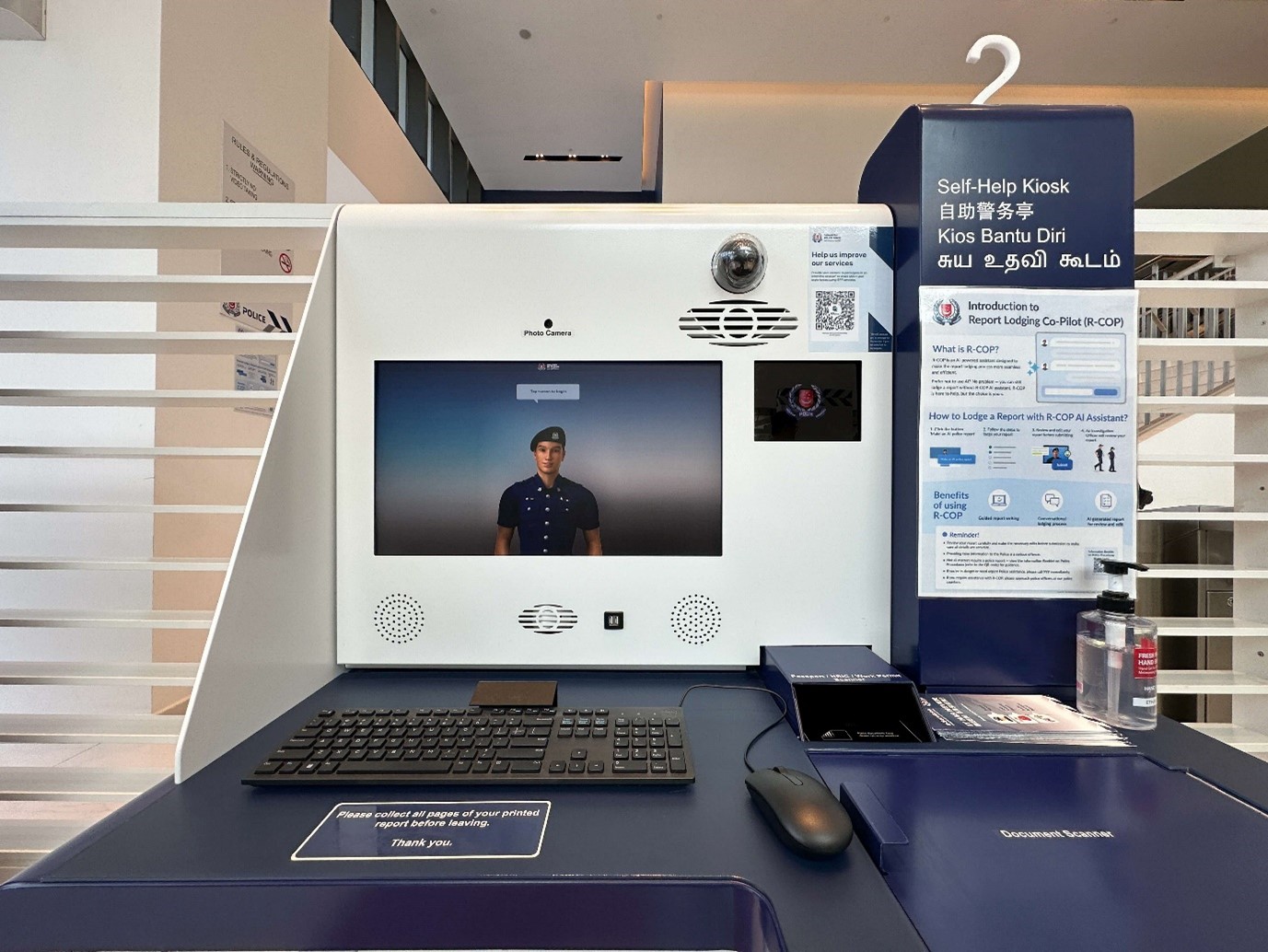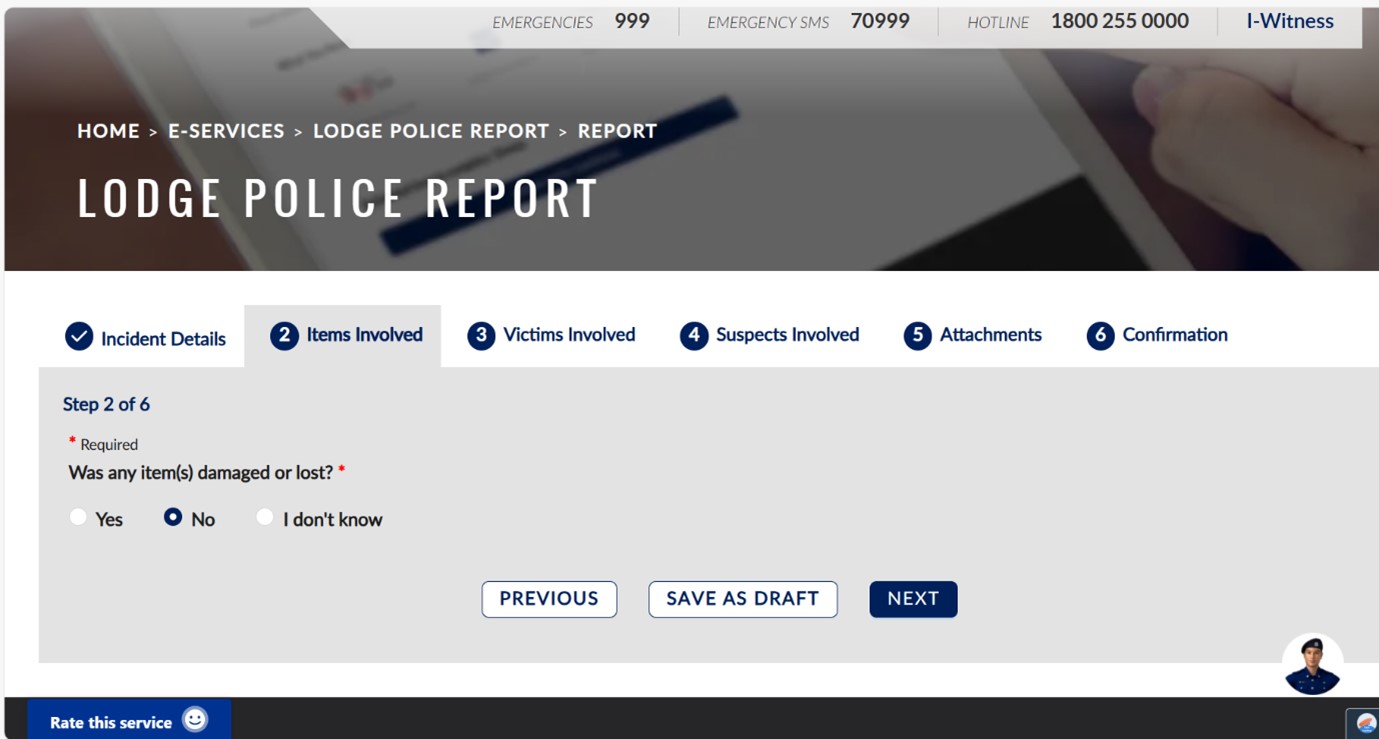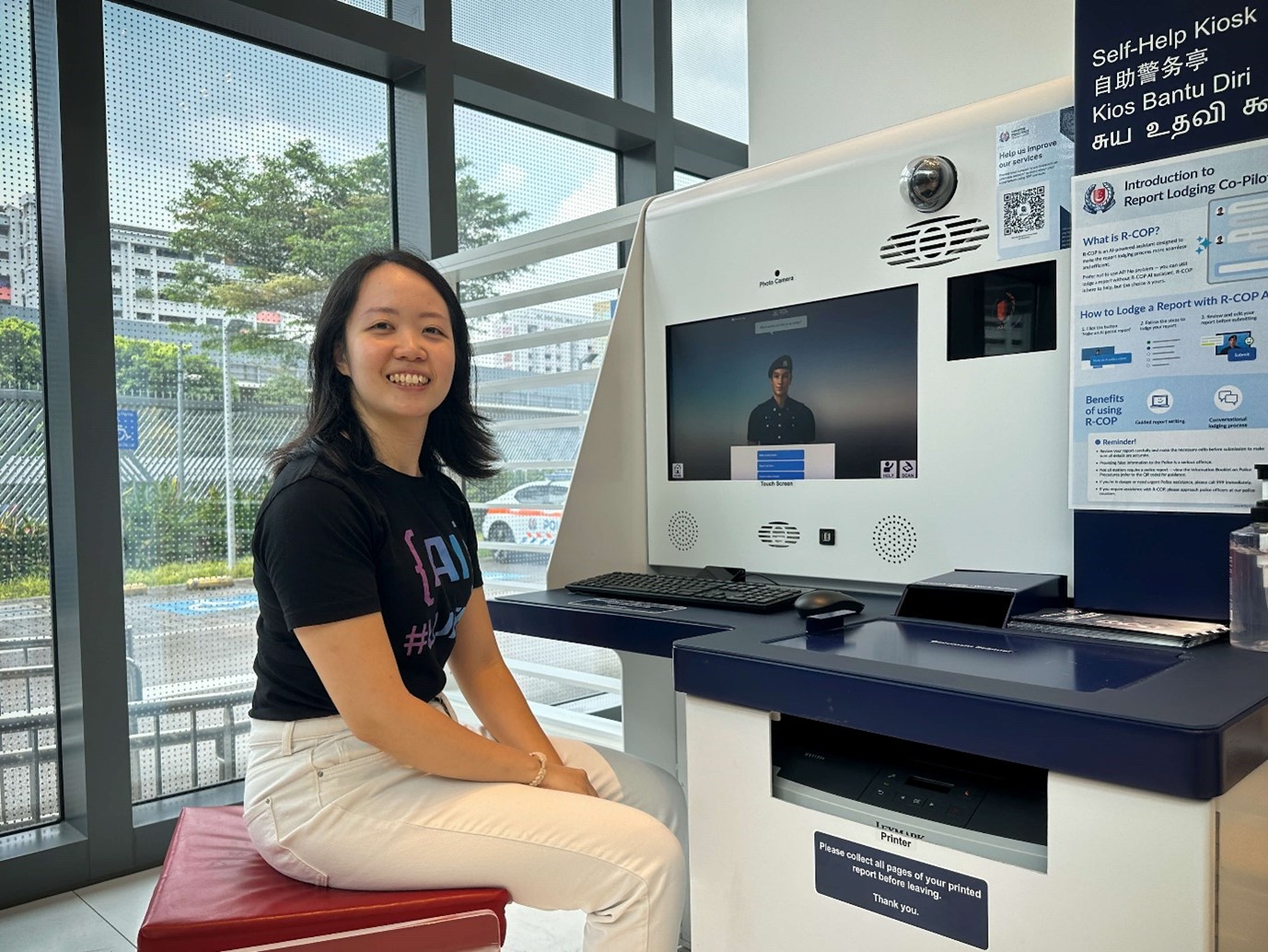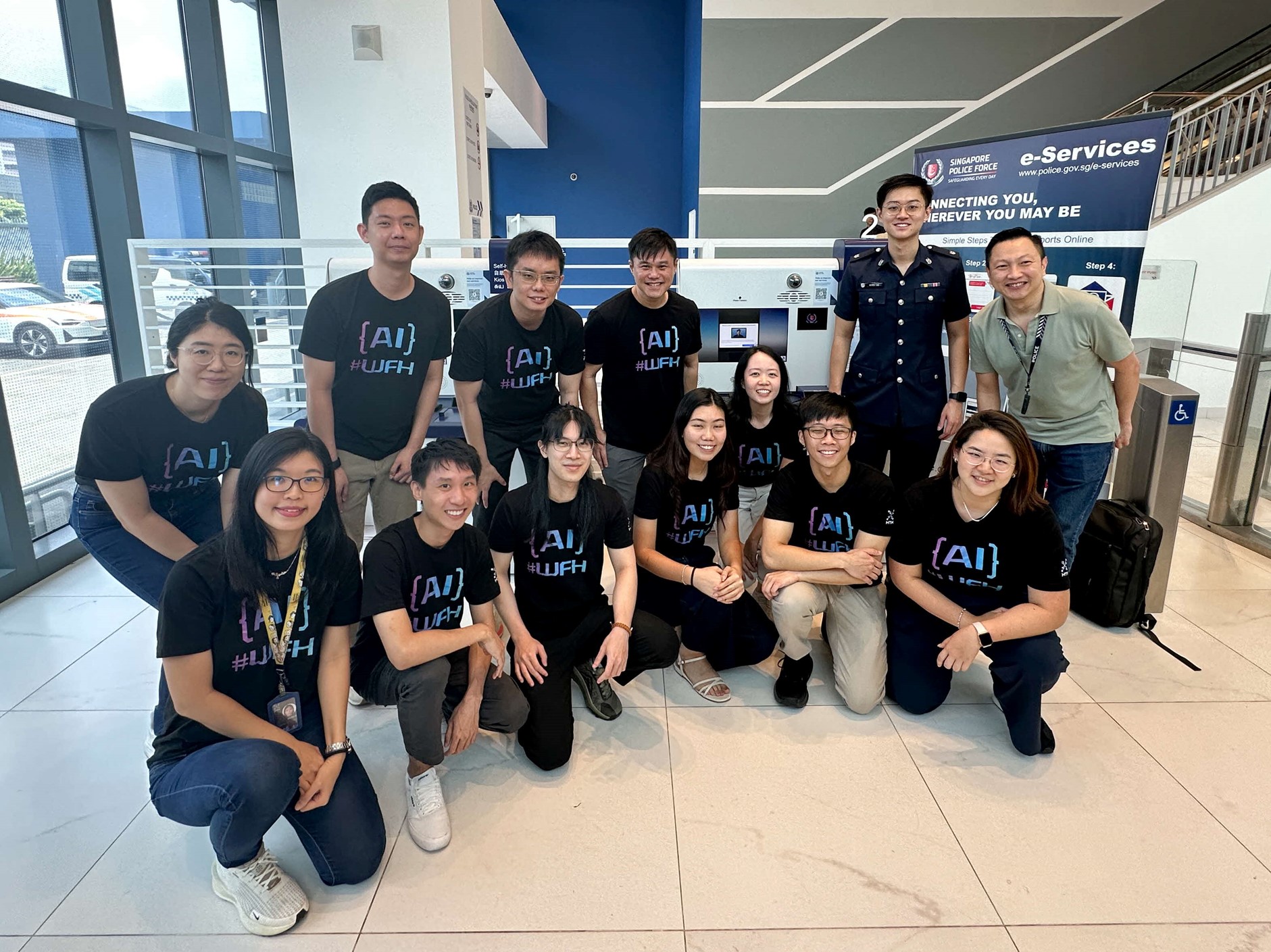 A self-help kiosk with the new Report Lodging Co-Pilot application at Woodlands West Neighbourhood Police Centre. (Photo: HTX/Alywin Chew)
A self-help kiosk with the new Report Lodging Co-Pilot application at Woodlands West Neighbourhood Police Centre. (Photo: HTX/Alywin Chew)
Lodging a police report is no enviable task, not least for the fact that it involves rehashing details that may be unpleasant.
Thankfully, HTX has made this process easier with artificial intelligence (AI).
Many people would be familiar with the concept of filing a formal report in person at a police station, or online via the Singapore Police Force’s (SPF’s) e-service.
While the system’s electronic form gives the Investigation Officer (IO) a thorough account of the incident, it can be lengthy – potentially protracting an already uncomfortable situation.
So, when I learnt about the Report Lodging Co-Pilot (R-COP), an AI-enabled chatbot designed to assist the public in lodging police reports, I was eager to find out how its user experience stacks up against that of the SPF website e-service.
 The e-service for filing police reports is available on SPF’s website. (Photo: HTX/Cara Yap)
The e-service for filing police reports is available on SPF’s website. (Photo: HTX/Cara Yap)
Intuitive by design
Developed in-house by HTX and SPF, the new chatbot streamlines the reporting process using AI, and reduces the need for subsequent follow-ups between IOs and users to gather missing details because its Large Language Model (LLM) has been engineered to prompt users for pertinent details that have not been submitted.
What’s more, the R-COP can even correct typos in the written report, unlike the e-service which records entries verbatim. This would be particularly useful for someone who may not be in the right frame of mind to produce a perfectly coherent narrative, or who isn’t proficient in English.
In fact, you could even type out a report in Singlish and the R-COP, will automatically summarise the account into a grammatically correct and comprehensible report for the IO.
What this means is that IOs can spend less time following up on reports and more time on investigating the case.
The R-COP is currently available at self-help kiosks located within SPF’s seven police division headquarters.
A user-friendly experience
So, can AI really improve an experience often laden with negative connotations?
To begin, both the SPF website e-service and the R-COP chatbot require users to log in with their Singpass, as well as furnish basic information such as the date/time/location of an incident, and type of purported crime.
The key difference lies in their interfaces. While the e-service requires users to complete a six-section electronic form, R-COP functions more seamlessly as a chat session guided by prompts. This alone makes the process feel less daunting than the e-service.
What many may appreciate most, however, are its guided prompts, which give a clear framework to structure my account. With the R-COP, there is no need to second-guess how much detail to provide.
 Germaine Kong, Lead Engineer (Product Manager), AI Products at HTX’s xData was among those who worked on the R-COP. (Photo: HTX/Alywin Chew)
Germaine Kong, Lead Engineer (Product Manager), AI Products at HTX’s xData was among those who worked on the R-COP. (Photo: HTX/Alywin Chew)
The chatbot instead blends straightforward Yes/No questions with open-ended ones, tailoring its queries to the type of case. It can even flag missing details from the initial account and follow up with targeted questions!
In designing a fit-for-purpose chatbot, the HTX team behind the R-COP had to balance safety guardrails with flexibility, ensuring that legitimate reports containing sensitive content like violence or weapons could pass through, while still blocking malicious submissions.
 R-COP’s guided prompts help structure the reporting process. (Photo: HTX/Cara Yap)
R-COP’s guided prompts help structure the reporting process. (Photo: HTX/Cara Yap)
Thanks to R-COP’s accessibility and time-saving design, it took me just four minutes to submit a sample report via R-COP after reviewing an AI-generated summary.
How long did I spend using the e-service for the same report? Fifteen minutes.
Talk about impactful innovation!
 The team from HTX’s xData and their SPF counterparts after the successful demo of the R-COP to the media. (Photo: HTX/Alywin Chew)
The team from HTX’s xData and their SPF counterparts after the successful demo of the R-COP to the media. (Photo: HTX/Alywin Chew)

